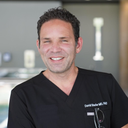I recently had a lower Blepharoplasty done 8 weeks ago. Just the removal of fat tissue, nothing elese. I hardly had any bruises after the procedure but the lower lids have always been a little puffy.
My surgeon, after examined them, said it was due to fluid retention and would get better over time. However, my eyes have been looking the same, 3 days post operation. If they haven't changed after 2 months, how would I expect them to ever change? Or, could my problem due to something else?
My surgeon said he cannot tell the condition will be permanent or not and there is nothing I can do. Can I do something to improve my condition? Any response will be appreciated.
Answers (13)
From board-certified doctors and trusted medical professionals
Dr. David Shafer, MD, FACS

Dr. David Shafer, MD, FACS
Board Certified Plastic Surgeon
Answer
Dr. Tanuj Nakra, MD, FACS

Dr. Tanuj Nakra, MD, FACS
Oculoplastic Surgeon, Board Certified in Ophthalmology
Answer
Dr. Daniel Reichner, MD, FACS

Dr. Daniel Reichner, MD, FACS
Board Certified Plastic Surgeon
Answer
Dr. William Portuese, MD
Dr. William Portuese, MD
Board Certified Facial Plastic Surgeon
Answer
Dr. Richard D. Gentile, MD
Dr. Richard D. Gentile, MD
Board Certified Facial Plastic Surgeon
Answer
Dr. Christopher L. Hess, MD
Dr. Christopher L. Hess, MD
Board Certified Plastic Surgeon
Answer
Dr. Scott E. Kasden, MD, FACS
Dr. Scott E. Kasden, MD, FACS
Board Certified Plastic Surgeon
Answer
Dr. Andrew Y. Kleinman, MD
Dr. Andrew Y. Kleinman, MD
Board Certified Plastic Surgeon
Answer
Dr. Stella Desyatnikova, MD
Dr. Stella Desyatnikova, MD
Board Certified Facial Plastic Surgeon
Answer
Dr. Raj K. Gupta, MD (retired)
Dr. Raj K. Gupta, MD (retired)
Board Certified Plastic Surgeon
Answer
More Eyelid Surgery Questions
See all Eyelid Surgery Q&AWE SEND PRETTY
EMAILS
What’s trending? Who’s turning heads? Which TikTok myths need busting? We’ve got you. No fluff, no gatekeeping—just real talk. Get our free, unfiltered newsletter.